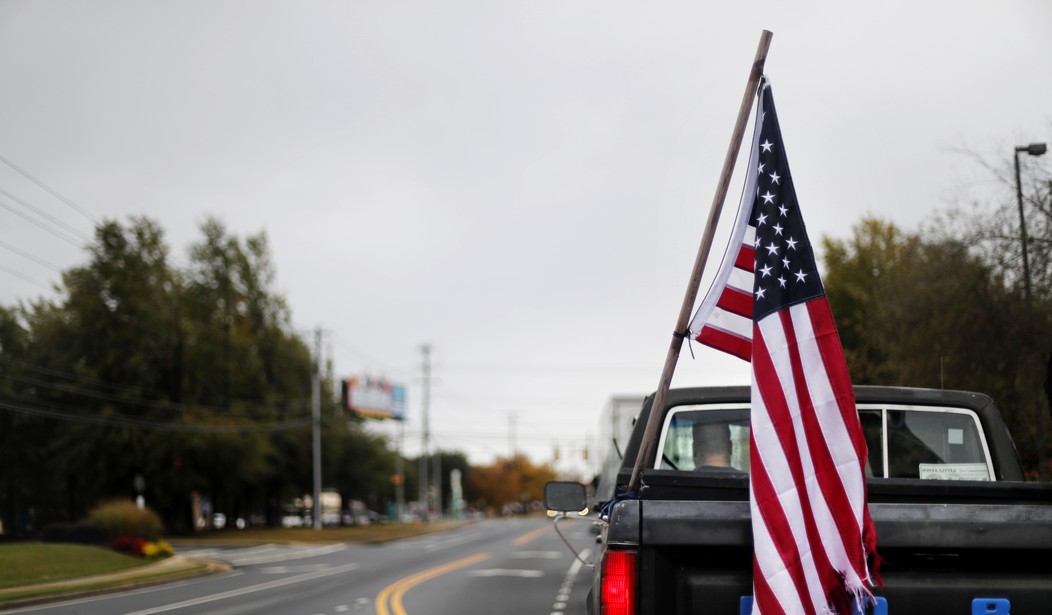An interesting dichotomy in the current election cycle is the gap between race-specific polling -- which is quasi-okay-to-fairly-bad for Democrats -- and, well, everything else. I'll have more analysis on polling versus 'fundamentals' and 'follow the money' in the coming days, but suffice it to say that based on history, presidential approval, economic dissatisfaction and right track/wrong track data, the environment remains quite grim for the ruling party. The fact that Democrats and outside groups are frantically plowing last-minute millions into statewide races in New York and Washington feels like a pretty significant tell, as does a round of GOP investments into deeper blue territory. And the professional prognosticators are shifting projections, too. Based on the non-polling indicators, it's beginning to look a lot like Christmas for Republicans:
NEW @CookPolitical House rating changes: 10 more blue state districts move in Republicans' direction, including #CA47 Rep. Katie Porter (D) from Lean D to Toss Up. Full analysis: https://t.co/ldqos2Pi8J pic.twitter.com/rD40MW6vdw
— Dave Wasserman (@Redistrict) November 1, 2022
🦊⚡️ Here it is… your final Fox News Power Rankings forecast for 2022: https://t.co/jskoyPP8Nb
— Rémy Numa (@remynuma) November 1, 2022
The national polling (not specific to individual races) is also looking pretty bleak for Democrats. Look at this:
NBC NEWS: "Republicans hold MASSIVE advantage on 3 of 5 most Important issues according to New Gallup poll"
— InteractivePolls (@IAPolls2022) November 1, 2022
Which party do you trust to handle:
⦿ Immigration: GOP +33
⦿ The Economy: GOP +31
⦿ Crime: GOP +28
⦿ Gun policy: GOP +5
⦿ Abortion: Dem +14pic.twitter.com/5qx5Wq7MSS
Those numbers speak for themselves, particularly on the top-tier issues (these are leads among those voters naming issue X as their top priority). Republicans have even cut into Democrats' advantage on abortion, despite widespread fear-mongering and distortions, perhaps because Republicans have managed to partially neutralize the attacks by highlighting Democrats' own extreme and grotesque stance on the issue. Gallup also measures a huge gulf on the priorities of Republicans and Democrats. Which issue set is more likely to resonate with independents and late-breakers, I wonder?
Recommended
R voters’ top 3 issues: Economy, crime, immigration
— Guy Benson (@guypbenson) November 1, 2022
D voters’ top 3 issues: Abortion, climate change, guns https://t.co/9WRLCI9yrf
Look at this movement among suburban white women in the latest Wall Street Journal national poll (of registered, not likely, voters):
“That group [white suburban women] which the pollsters said makes up 20% of the electorate, shifted 26 percentage points away from Democrats since the Journal’s August poll and now favors the GOP by 15 percentage points.” https://t.co/ubiUS57VRP
— Noah Rothman (@NoahCRothman) November 1, 2022
And yet, progressives this week have been crowing about a fresh set of New York Times/Siena surveys showing Democratic Senate candidates leading in Arizona, Pennsylvania and Georgia -- and tied in Nevada. That's not very red-wavey is it? We could pick through each one of those results, noting that (a) the Libertarian has since dropped out of the Arizona race while endorsing Republican Blake Masters, (b) that most of the Keystone State poll was in the field before The Debate, with post-debate data looking much worse for Fetterman, and (c) that another major statewide Georgia poll shows Herschel Walker slightly ahead. More significant, though, is the New York Times' own top data analyst warning that the numbers they've published could very well substantially under-sample Republican-leaning voters, and for a familiar reason:
White reg. Dems were 28% more likely to respond than white reg. Reps.
— Nate Cohn (@Nate_Cohn) October 31, 2022
That's nothing like our national polling and quite a bit like 2020, when party quota/weighting was insufficient. That's a troubling sign for nonresponse biashttps://t.co/pOmfH1hLBX
A Worrisome Pattern Re-emerges in Seeking Response From Republicans https://t.co/NOgaNqT9cp
— Nate Cohn (@Nate_Cohn) November 1, 2022
In the aftermath of the 2020 election, most pollsters concluded that the polls probably underestimated Donald J. Trump because of something called nonresponse bias. In short, Mr. Trump’s supporters were less likely to respond to surveys than Joe Biden’s supporters, even among people who had the same demographic characteristics. While nonresponse bias is challenging to prove, there was one possible marker of it in the New York Times/Siena College data in 2020: White registered Democrats were more than 20 percent likelier to respond to our surveys than white registered Republicans. In our final wave of Senate and House polls in the last few days, that hallmark of nonresponse bias looks as if it’s back. Overall, white registered Democrats were 28 percent likelier to respond to our Senate polls than Republicans — a disparity exceeding that from our pre-election polling in 2020...the wide disparity in Democratic and Republican response rates was most likely symptomatic of a deeper nonresponse bias: Biden voters, regardless of their party, were probably likelier to respond than Trump voters. This drove up the Democratic response rate, but it did more than that. It meant there were too many Biden Democrats; too many Biden Republicans; too many Biden independents. Weighting by party wasn’t enough. This time around, the response patterns by district and state certainly raise the possibility that there’s a similar challenge.
He's not definitively predicting these polls will be wrong, but he's observing that a similar effect that hurt this series' accuracy last cycle is back in play -- and is even a bit more pronounced this time. A pre-emptive red flag. Progressive media is in early cope mode, engaging in what looks like shades of 'unskew the polls' wish-casting, as conservatives did circa 2012:
Joy Reid was wearing her tin foil hat tonight. She's accusing polling groups such as Real Clear Politics of trying to "flood the zone" with fake polls to make it seem like Republicans are headed toward victory in next week's midterm elections. pic.twitter.com/kN5hg5Mo0e
— Kevin Tober (@KevinTober94) November 1, 2022
I'll leave you with some new polls showing GOP nominees tied or ahead in the Pennsylvania and New Hampshire Senate races:
New PA poll from Muhlenberg:
— Guy Benson (@guypbenson) November 1, 2022
Oz/Fetterman tied 47-47 (5-point swing toward Oz since last series survey)
Shapiro up 14 for Gov
GOP+5 on PA generic ballot
Majority disapproval for Biden in the state 42/53
SENATE
— InteractivePolls (@IAPolls2022) November 1, 2022
Don Bolduc (R): 48% (+1)
Maggie Hassan (D-inc): 47%
GOVERNOR
Chris Sununu (R-inc): 54%(+17)
Tom Sherman (D): 37%
NH-01
Karoline Leavitt (R): 51% (+6)
Chris Pappas (D-inc) 45%
NH-02
Ann Kuster (D-inc): 50% (+8)
Robert Burns (R): 42%https://t.co/cobdBRcGIo
For what it's worth, this PA poll predicted a five-point Biden win in 2020. Biden's actual margin was one point. This NH poll predicted a Biden win of eight points in 2020, coming within less than a point of accuracy.
























Join the conversation as a VIP Member